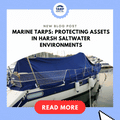Introduction
When it comes to outdoor festivals, the right tarp can make all the difference. Whether it's for providing shelter, defining spaces, or simply adding a touch of practical decor, selecting the ideal tarp is crucial. This guide will walk you through the key considerations to ensure your festival is a hit.
History of Tarps in Outdoor Events
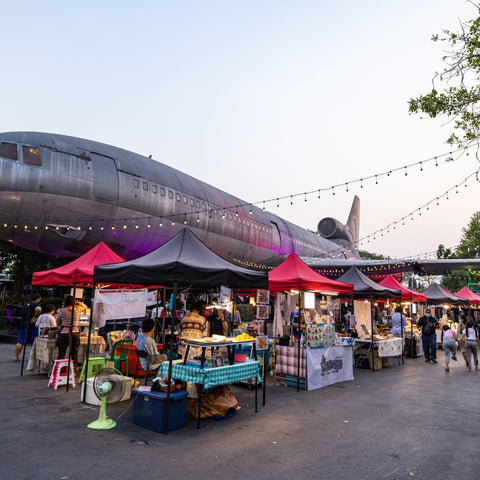
Dating back to early gatherings, tarps have evolved from simple cloth pieces to high-tech materials, shaping how we experience outdoor events.
Ancient Beginnings:
Earliest Use: Our nomadic ancestors used rudimentary shelters made from animal skins, woven reeds, and leaves, laying the foundation for the concept of tarps for protection and shade.
Evolution of Materials: From woven animal hair in Asia to animal hides in Africa and palm leaves in Polynesia, different regions utilized their local resources to create early tarp-like structures.
Religious and Cultural Significance: In ancient Egypt, elaborate tapestries and tent-like structures made of linen played a vital role in religious ceremonies and celebrations.
Medieval Transformations:
Rise of Canvas: The invention of canvas, a sturdy and water-resistant fabric, revolutionized outdoor event experiences. Jousting tournaments, fairs, and markets used canvas awnings and pavilions to provide shade and shelter.
Portable Versatility: Portable canvas tents became popular for traveling merchants and entertainers, allowing them to set up temporary performance spaces and stalls at outdoor gatherings.
Military Necessity: Armies adopted durable canvas tarps for shelter and camp construction, leading to advancements in waterproofing and structural integrity.
Modern Innovations:
Synthetic Revolution: The 20th century saw the rise of synthetic materials like polyester and nylon, offering unprecedented levels of water resistance, strength, and lightweight portability.
Specialized Tarps: The development of fire-retardant, UV-resistant, and translucent tarps catered to specific needs of outdoor events, from concerts and festivals to sporting events and weddings.
Technological Integration: Modern tarps can incorporate LED lighting, heating systems, and even air conditioning, transforming them into dynamic event spaces and interactive installations.
Beyond Shelter:
Aesthetics and Branding: Tarps have become canvases for artistic expression and branding, with vibrant colors, custom logos, and creative designs enhancing the visual appeal of outdoor events.
Sustainability and Eco-friendliness: Recycled materials and biodegradable options are making tarps more sustainable, addressing environmental concerns while protecting attendees from the elements.
Social Impact: In disaster relief efforts and humanitarian aid, tarps provide vital shelter and temporary structures for displaced communities, highlighting their role in social responsibility.
This is just a starting point for expanding the content. You can add specific examples of historical events where tarps played a significant role, delve deeper into the technological advancements of different materials, or explore the cultural and social implications of tarps in various societies. Remember, the story of tarps in outdoor events is a fascinating journey interwoven with human ingenuity, adaptation, and a desire to create memorable experiences under the open sky.
Types of Tarps for Festivals

Beyond their basic purpose of shielding us from the elements, festival tarps take on diverse roles, each tailored to specific needs. Let's embark on a material odyssey, exploring the strengths and ideal uses of different tarp types:
Rugged Canvas:
Material: Heavy cotton, often treated for water resistance and fire retardancy.
Strengths: Classic aesthetic, durable, breathable, provides shade and privacy.
Ideal for: Creating large communal hangouts, offering sturdy hammocks, crafting windbreaks.
Lightweight Polyethylene:
Material: Thin plastic, usually with a rip-stop weave for increased strength.
Strengths: Compact and packable, waterproof, versatile in size and shape.
Ideal for: Emergency rain shelters, ground covers, makeshift tents, covering gear.
Durable Vinyl:
Material: PVC with a reinforced scrim, often double-coated for increased weather protection.
Strengths: Highly waterproof, tear-resistant, good insulator, reflective options available.
Ideal for: Creating weatherproof shelters, providing shade booths, crafting sturdy ground protection, reflecting heat in hot weather.
Bonus Materials:
Mesh Tarps: Breathable sunshades for blocking strong sunlight while maintaining airflow.
Beyond the Material:
When choosing a festival tarp, consider these factors:
Size and Shape: Rectangular, square, or triangular? Large enough for your needs?
Grommets and Tie-Downs: Reinforced attachment points for secure anchoring.
Seams and Reinforcement: Double-stitched or sealed for increased durability.
Accessories: Poles, ropes, stakes for creating various tarp configurations.
With this knowledge, you can navigate the tarp aisle like a seasoned festival veteran, ready to conquer the elements and make your festival experience truly unforgettable.
Remember, the perfect tarp is a symbiotic blend of material, purpose, and creativity. So, unleash your inner festival architect and let your tarp become an extension of your own unique and vibrant vibe!
Protection Against Weather

A primary function of tarps is to shield festival-goers from unpredictable weather, be it rain, scorching sun, or gusty winds.
Shielding from the Sun:
Shade and Shelter: Large tarps create spacious covered areas, providing welcome relief from the scorching sun. This is crucial for hydration stations, merchandise booths, or simply relaxing spots for festival-goers to escape the heat.
Sunburn Prevention: By blocking harmful UV rays, tarps can significantly reduce the risk of sunburn, especially for those with sensitive skin.
Comfort and Cooler Temperatures: Shade from tarps can lower the perceived temperature by several degrees, making the overall festival experience more comfortable.
Protection from Rain:
Dry Haven: During downpours, tarps offer immediate shelter, keeping festival-goers and their belongings dry. This is especially valuable for protecting equipment, food stalls, and other festival essentials.
Mud Mitigation: By covering the ground, tarps prevent muddy puddles from forming, making it easier to navigate the festival grounds.
Maintaining the Fun: Even light rain can dampen the festival spirit. Tarps help keep the party going by providing dry areas for people to gather and enjoy themselves.
Battling the Wind:
Windbreak and Stability: Tarps can act as windbreaks, reducing the impact of strong gusts on festival tents, decorations, and even people. This helps prevent damage and ensures a safer environment.
Warmth and Comfort: Wind can make the air feel colder, even in warm weather. Tarps create a sense of enclosure that can help retain heat and keep people feeling more comfortable.
Dust Control: In windy conditions, tarps can help minimize dust blowing around, improving air quality and overall comfort for festival attendees.
Beyond the Basics:
Creative Canvas: Tarps can be used for more than just basic protection. They can be decorated with vibrant colors, painted with festival themes, or even used to create unique art installations, adding to the overall festival atmosphere.
Multi-purpose Functionality: The same tarps used for weather protection can also be repurposed for other needs, such as creating makeshift stages, dividing festival areas, or even providing privacy for changing areas.
By incorporating tarps strategically throughout the festival grounds, organizers can create a more comfortable, safe, and enjoyable experience for everyone, regardless of the weather.
Creating Spaces

Tarps are instrumental in defining spaces like stalls, stages, and seating areas, essential for organization and flow.
Beyond Basic Utility: Tarps as Architectural Tools
The statement "Tarps are instrumental in defining spaces" lays the foundation, but let's dive deeper into how these humble coverings transform into powerful architectural tools. Here's how tarps can be used to craft distinct spaces:
1. Shaping and Dividing:
Stalls: Imagine vibrant marketplaces bustling with activity. Tarps of varying colors and textures create individual stalls, each representing a distinct vendor or product. They delineate boundaries, yet maintain a cohesive market atmosphere.
Stages: A blank canvas transformed! Tarps draped and suspended become backdrops for theatrical performances, musical concerts, or even outdoor movie screenings. The play of light and shadow on the fabric adds depth and dynamism to the stage.
Seating Areas: Under the shade of a stretched tarp, a communal space is born. Benches or mats placed underneath offer respite from the sun or rain, fostering a sense of togetherness and shared experiences.
2. Defining Flow and Direction:
Pathways: Tarps laid flat or hung low guide foot traffic, leading visitors through specific areas or towards points of interest. They can create a sense of anticipation as one navigates through the covered path.
Open-air Corridors: Imagine a festival site dotted with food stalls. Strategically placed tarps overhead form open-air corridors, directing the flow of crowds while still allowing for a sense of spaciousness.
Transitions: Moving from one area to another? Tarps strung overhead mark transitional zones, offering a subtle visual cue for a change in atmosphere or activity.
3. Beyond Function: Adding Mood and Character
Color Palette: The choice of tarp color plays a vital role in setting the mood. Vibrant hues create a festive atmosphere, while muted tones lend a sense of calm and relaxation.
Textural Play: Rough canvas, smooth vinyl, or translucent plastics - each texture adds a distinct character to the space. Textured tarps can soften stark environments or create visually interesting layers.
Lighting Effects: Tarps are not just barriers, they can become canvases for light. Play with projected light or string lights to create dramatic silhouettes, dappled patterns, or a warm, inviting glow.
Ultimately, tarps are more than just practical coverings. They become tools for shaping experience, guiding movement, and infusing spaces with personality. So, the next time you see a simple tarp, remember its potential to transform and define the spaces around us.
Design and Aesthetics
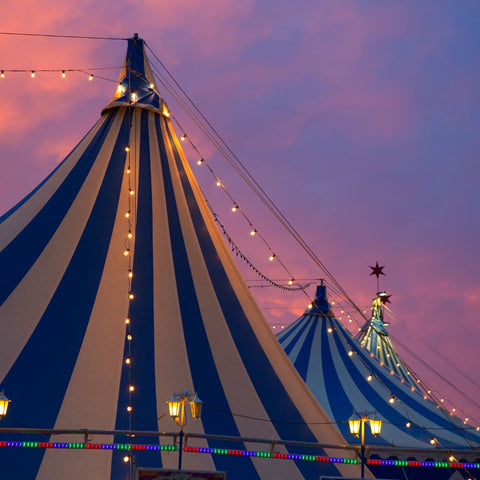
Beyond functionality, tarps add a splash of color and theme to festivals, enhancing the overall aesthetic.
While their primary purpose is shelter and protection, tarps have become surprisingly adept at adding a vibrant layer of design and aesthetics to any event, particularly festivals. Here's how these humble sheets of fabric go beyond functionality to elevate the atmosphere:
Color Explosion:
Bold hues and vibrant palettes: Ditch the dull khaki browns and embrace a rainbow of shades! Imagine festival grounds bursting with eye-catching reds, electric blues, sunny yellows, and lush greens. These bold colors instantly set the tone, creating a joyful and energetic ambiance.
Themed tapestries: Align the color palette with the festival's theme. A neon jungle party? Think lush greens, dappled sunlight patterns, and pops of animal prints. A celestial space odyssey? Paint the night sky with deep purples, twinkling stars, and shimmering constellations.
Strategic layering: Create depth and visual interest by layering tarps of different colors and textures. Translucent mesh tarps can cast playful shadows over vibrant backgrounds, while metallic finishes add a touch of glamor.
Creative Canvas:
Artistic storytelling: Transform tarps into giant canvases, showcasing festival themes or local art. Murals depicting musicians, dancers, mythical creatures, or nature scenes can become iconic landmarks of the event.
DIY installations: Go beyond flat canvases! Sculpt tarps into three-dimensional shapes, creating whimsical arches, flowing tunnels, or even towering animal sculptures. These interactive elements encourage exploration and add a playful touch.
Interactive projections: Turn tarps into dynamic screens for light shows or video projections. Imagine swirling kaleidoscopes of color dancing on fabric walls, or captivating stories projected onto billowing canvases.
Functional Flair:
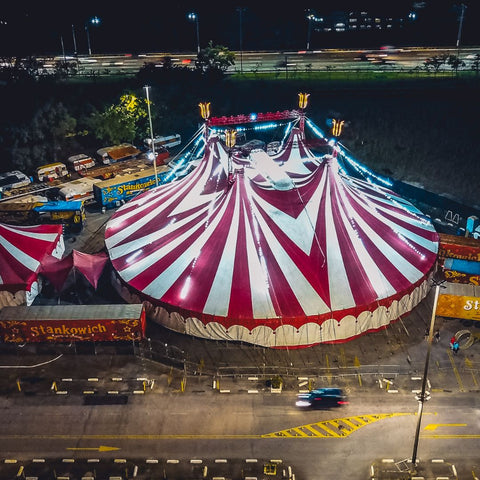
Flags and banners: Create a sense of celebration with fluttering flags and banners strung across the festival grounds. Design them with the event logo, sponsor names, or inspirational quotes for a touch of branding and motivation.
Directional guides: Don't underestimate the power of well-designed tarp signage. Guide attendees through the festival with clear, visually appealing directions, maps, and schedules.
Chill zones and pop-up spaces: Carve out shaded havens using tarps draped over poles or suspended between trees. Decorate these pockets of respite with colorful patterns or hanging lanterns for a touch of cozy charm.
By embracing their aesthetic potential, tarps transcend their practical purpose and become integral elements of a festival's visual language. They can contribute to the overall theme, set the mood, and even become interactive art installations, adding a layer of magic and memory to the experience. So, next time you see a festival adorned with colorful tarps, remember, it's not just about protection – it's about painting the air with vibrant stories and celebrating the power of creativity.
Safety and Regulations
Fire-resistant tarps are a staple in festival safety, adhering to regulations and ensuring public well-being.
1. Purpose and Types of Tarps for Festivals:
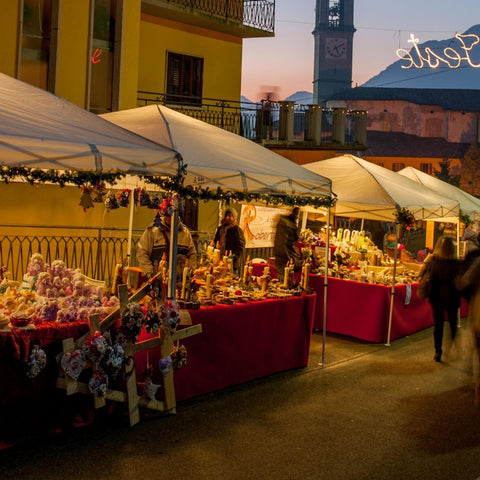
-
Fire Safety:
- Tarps help prevent the spread of flames and embers from cooking areas, fire shows, or accidental ignitions.
- Different levels of fire resistance exist, categorized by flame spread and burn rate. Choose tarps with appropriate certifications based on local regulations and potential fire hazards.
-
Weather Protection:
- Tarps provide shelter from sun, rain, and wind, enhancing attendee comfort and reducing weather-related disruptions.
- Consider waterproof vs. water-resistant options and appropriate ventilation for enclosed spaces.
-
Structure and Aesthetics:
- Tarps can form part of festival infrastructure, creating entrances, booths, walkways, and overhead coverings.
- Explore creative tarp usage for signage, decorations, and themed areas.
2. Regulations and Compliance:
- Fire Codes: Festival organizers must comply with local fire codes regarding fire-resistant materials, clearances, and flame retardant treatment.
- Permits and Approvals: Obtaining permits for tarp installations might be necessary, depending on size, complexity, and intended use.
- Inspections and Maintenance: Regular inspections for rips, tears, and fire retardant effectiveness are crucial to ensure continued safety.
3. Choosing the Right Tarps:
- Material: Fire-resistant tarps come in various materials like PVC, polyester, and canvas, each with advantages and disadvantages in terms of durability, weight, cost, and fire resistance.
- Size and Shape: Select tarps based on the intended purpose and required coverage area. Consider wind load and potential sagging when choosing size and fastening points.
- Features: Grommets, reinforcements, tie-down points, and reflective strips can enhance functionality and safety.
4. Responsible Use and Disposal:
- Proper Installation and Securing: Use sturdy anchoring points and appropriate fastening methods to prevent windblown tarps from becoming hazards.
- Lighting and Electrical Considerations: Maintain safe distances between tarps and lighting fixtures or electrical cables to avoid heat build-up or ignition risks.
- Sustainable Practices: Choose recyclable or biodegradable tarp materials and prioritize responsible disposal to minimize environmental impact.
Festival safety is a shared responsibility. By understanding the diverse roles of tarps, adhering to regulations, and making informed choices, we can create vibrant and memorable events while prioritizing public well-being.
Ease of Setup and Transportation

Modern tarps are designed for easy setup and portability, a boon for festival organizers.
Lightweight Materials: Gone are the days of lugging around heavy canvas tarps. Today's tarps are often made from high-tech fabrics like ripstop nylon or polyester, making them incredibly lightweight and easier to handle. A team of two can effortlessly carry tarps that would have required several strong hands in the past.
Compact Packing: Modern tarps fold down to remarkably small sizes, fitting easily into storage bins or duffel bags. This reduces the space needed during transportation and storage, a welcome relief for festivals dealing with limited backstage or warehouse space.
Quick Deployment Systems: Gone are the days of laboriously threading ropes through grommets. Many modern tarps come equipped with clever attachment systems like bungee cords, carabiner loops, or quick-release buckles. These features allow for rapid setup and takedown by even small teams, saving precious time and manpower.
Modular Versatility: Many tarp designs are modular, allowing you to connect multiple tarps together to create larger shelters, sunshades, or barriers. This flexibility lets you adapt to various layouts and unforeseen weather conditions, reducing the need for multiple, individual tarps.
Weather-Resistant Features: Modern tarps are often treated with coatings that make them waterproof, UV-resistant, and fire-retardant. This eliminates the need for additional weatherproofing measures, further streamlining setup and reducing costs.
Durable Construction: While lightweight, modern tarps are incredibly strong and tear-resistant. They can withstand wind, rain, and even hail, offering reliable protection for festival equipment and attendees alike. This reduces the need for frequent replacements and saves money in the long run.
In conclusion, the ease of setup and transportation offered by modern tarps is a game-changer for festival organizers. By streamlining logistics, saving time and manpower, and reducing costs, these versatile tools allow organizers to focus on creating memorable experiences for attendees.
Cost-Effectiveness
Balancing affordability and durability, tarps offer an economical solution for festival infrastructure.
Affordability Advantage:
Lower upfront costs: Compared to traditional materials like wood or metal, tarps offer significant savings on initial purchase and installation. This affordability is especially beneficial for smaller festivals or those working with tight budgets.
Reduced labor costs: Tarps are often lighter and easier to assemble than rigid structures, requiring less manpower and saving on labor costs. This is particularly relevant for large-scale festivals where labor can be a significant expense.
Minimal infrastructure investment: Using tarps eliminates the need for heavy foundations or permanent structures, reducing the need for costly site preparation and potential damage to existing grounds.
Community and Cultural Impact

Tarps do more than protect; they foster community and enhance cultural experiences.
Community Builders:
Shared Space: Tarps create makeshift shelters, uniting diverse groups under a common roof. They become communal gathering spaces for meals, storytelling, and impromptu performances, fostering a sense of belonging and shared joy.
Local Touch: Locally-designed tarps adorned with community stories and symbols act as visual storytellers, celebrating traditions and fostering pride in heritage. They transform sterile event spaces into extensions of the local identity.
Volunteer Enclaves: Tarps serve as hubs for volunteers, the backbone of any festival. They provide a sense of camaraderie and a dedicated space for planning, strategizing, and refueling, strengthening the vital community bonds that make festivals possible.
Cultural Catalysts:
Stage Backdrops: Tarps morph into vibrant visual narratives, setting the stage for performances and presentations. They transport audiences to different worlds, showcasing cultural motifs, historical scenes, or abstract artistic expressions.
Living Displays: They become canvases for community artists, showcasing murals, tapestries, or temporary installations that reflect the festival's theme or local traditions. This participatory art fosters cultural engagement and empowers communities to tell their own stories.
Symbolic Markers: In some cultures, specific colors or patterns on tarps hold deep symbolic meaning, connecting past and present. They act as visual reminders of shared values, beliefs, and ancestral wisdom, strengthening cultural identity and continuity.
Beyond the Festival Grounds:
Resilience and Resourcefulness: Tarps repurposed after the festival demonstrate community ingenuity. They transform into awnings, tents, or even building materials, extending the festival's spirit of resourcefulness and resilience into everyday life.
So, the next time you raise your eyes to a festival tarp, remember, it's not just a piece of fabric. It's a thread woven into the tapestry of community, a canvas for cultural expression, and a symbol of shared joy and resilience. Tarps are more than protection; they are the very essence of the festival experience, bringing people together and celebrating the vibrant fabric of life.
Conclusion
The versatility and importance of tarps in festivals cannot be overstated. They are a testament to human ingenuity and our desire to celebrate together, regardless of the elements.




